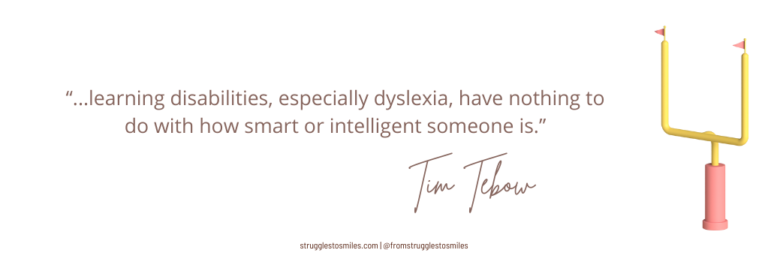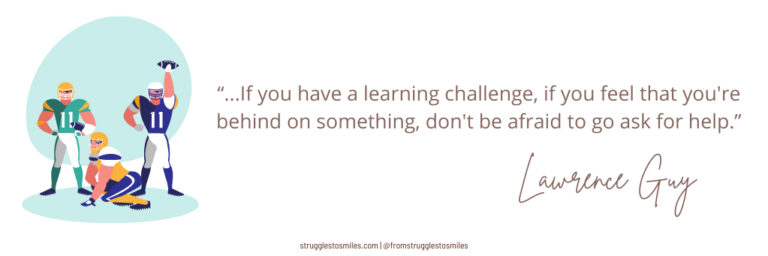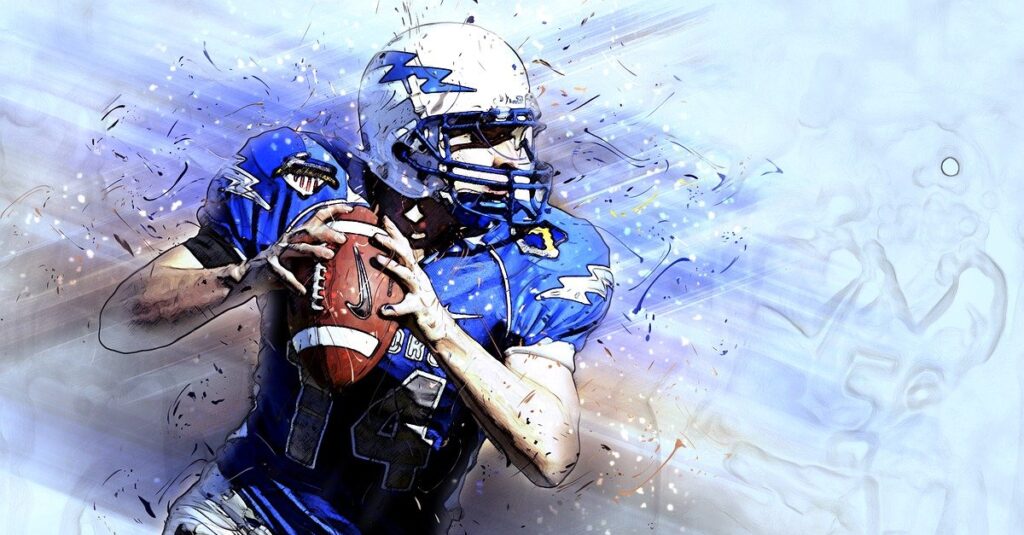Almost all famous athletes with disabilities had struggles in their past. Some are still working through their issues. But, even throughout the rollercoaster ride of diagnosis and treatment, many have excelled despite their disabilities.
Loads of feelings arise when the doctor explains to you that your child has a disability. Anger, sadness, disappointment, fear… the list differs for everyone and these are all natural emotions.
Your child may experience feelings of their own: frustration, confusion, trepidation… and who knows what else? Along with managing your own feelings, you need to help them navigate theirs as well. Oh, the joys of parenting. And the challenges!
Gradually, however, you begin to understand the disability, recognize your child’s strengths and envision their success. One way to begin this mindset shift, is to learn about amazing people who have similar disabilities and have achieved their goals.
Once you realize that the road of life doesn’t end with a diagnosis, THAT is when success begins.
Famous athletes with disabilities who have achieved success have a unique ability to spread messages of awareness and address stigmas. Sharing their stories of overcoming challenges can inspire children (and parents too) to work hard in the pursuit of success.
Do you want to help your child realize that they are not alone? That success is possible? Show them that some of their idols struggled too. To help feed your discussions, I’ve compiled a list of NFL players who struggled with physical, mental and intellectual disabilities.
Much can be learned from these exceptional individuals who have not only survived with disabilities, but have excelled.
Tim Tebow - Dyslexia
Quarterback for Denver Broncos and New York Jets
Even if you’re not a football buff, you’ve most likely heard the name Tim Tebow. What you might not know, is that Tim Tebow grew up with the challenges of dyslexia.
In his profession as a quarterback, Tim has to learn hundreds of plays and manage the entire offensive system for his team.
This could potentially be a challenge for someone with dyslexia. However, Tim hurdled that challenge by figuring out the specific methods of learning plays that work for him.
He finds that the kinesthetic aspects (touching, moving, walking through) of learning football plays, along with with the X and O diagrams that are used, are well suited to the way that his brain processes information.
The playbook that many other quarterbacks use to learn and memorize plays was NOT an effective method for Tim. But, instead of being defeated by his struggle, he realized that, “…learning disabilities, especially dyslexia, have nothing to do with how smart or intelligent someone is.”

Tim knew that he was capable of learning the plays despite his disability. So, he adapted his own strategy.
He writes out flashcards and reviews them when traveling (which is frequently for in-season professional athletes). The acts of copying the plays onto the cards and then reviewing them, help him to internalize the information.
Tim saw a challenge: finding a way to learn many plays that would work for his brain. Instead of viewing it as a road block, he designed a solution that worked for his abilities. He credits his disability with making him a great problem solver, and you can see why!
Tim Tebow encourages others to manage their disabilities by discovering their learning strengths as well. “… you can overcome it. You just figure out how you learn and what’s right for you.”
And clearly, that is what Tim Tebow did. I’d say it was a successful plan!
Xavier Cooper - Multiple Learning Disabilities
Defensive End for Cleveland Browns and New York Jets
Xavier Cooper struggled as a child because of his disabilities. He specifically remembers 8th grade, when he would read something 5-6 times before understanding it, and he was not able to read the same texts as his peers.
His parents advocated for him to receive special education services for his disability which provided the support he needed to graduate High School.
In college, he was matched with an incredible advisor who helped him choose classes that suited his strengths. She also encouraged him to advocate for himself with professors.
Xavier now works with children to pass along the lessons that he learned. His message is, “everybody learns differently and that’s ok”.
His advice, “… find a mentor or that person who is going to be a positive influence in your life – whether it’s a teacher, coach, neighbor, or friend”.
Keith O'Neill - Anxiety, Depression, BiPolar Disorder
Linebacker for the Dallas Cowboys and Indianapolis Colts
The biggest challenge that Keith O’Neill faced with his disability, is one that many families can relate to… finding the right medication.
Keith describes symptoms of anxiety and depression going back to his earliest memories. He remembers not being able to sleep because his mind would race. Recalling himself as a moody child, with his family being on edge because of his volatility, Keith knows that his family treated him gently, not really knowing how to interact.
Many families who have children with mental health issues can relate to those descriptions.
Now, however, Keith recognizes those traits as symptoms of depression, which he still manages today.
Although the road was never easy, Keith had a successful college and professional football career. He played with the Dallas Cowboys and enjoyed a Super Bowl victory with the Indianapolis Colts.
While crediting anxiety for both positive and negative influences on his career, Keith was content with his success and ready to live a more balanced life.
Leaving his high pressured NFL career, finding the right medication, continued therapy and a supportive family has helped him to reach the place of peace that he finds himself in today.
Keith now works to raise awareness and to de-stigmatize mental illness through public speaking and work with his foundation, the 4th and Forever Foundation.
Brandon Marshall - Borderline Personality Disorder
Wide Receiver for Denver Broncos, Miami Dolphins, Chicago Bears, New York Jets, New York Giants
Brandon Marshall had been labeled as “difficult”. He was frequently in trouble with the law both before and during his early years in professional football. Many of those incidents were related to disorderly and violent behaviors.
Eventually, during a hospitalization, he was diagnosed with Borderline Personality Disorder, a disability that affects the regulation of emotions.
At first, Brandon’s treatment required a mindset shift. He had grown up surrounded by violence and the mentality that talking about emotions showed weakness.
However, after learning more about mental health and the experiences of others, he realized that actually, dealing with your emotions requires great strength.
Now, Brandon works alongside his wife to spread this message to others. Their charity, Project 375 promotes awareness, works to end the stigma, and raise funding for treatment of mental health related disorders.
Borderline Personality Disorder didn’t stop Brandon from striving for greatness on the football field. He has made the pro-bowl 4 times since his diagnosis.
Terry Bradshaw - ADHD, Depression, Panic Attacks
Quarterback for the Pittsburgh Steelers
While fans celebrated Terry Bradshaw’s 4 SuperBowl victories, he was never as elated. He blames depression for his lack of excitement and enjoyment of his accomplishments.
His career came at a time when talk of mental health was limited in the professional football world. For that reason, Terry wasn’t open about his struggles until later in life. His experiences with panic attacks and depression started in High School, but it wasn’t until after his third divorce that he sought professional help and was prescribed medication to help address his new diagnosis.
Now, he realizes the relief that the medication provides him.
Terry realizes that the stigma regarding mental health, specifically among men, stood in the way of him seeking treatment earlier. These days Terry speaks openly about his disabilities and encourages others to speak up and seek treatment as well.
Shaquem Griffin - Amniotic Band Syndrome
Linebacker for the Seattle Seahawks and the Miami Dolphins
Shaquem Griffin was born with Amniotic Band Syndrom which caused the fingers on his left hand to not fully develop. The hand area that remained caused him a great deal of pain. So, at the age of 4, his parents, fully aware of his constant discomfort, opted for an amputation.
Shaquem grew up playing football and was the first player with one hand to be drafted into the NFL.
When he needs the use of a second arm, Shaquem uses a prosthetic device. As a professional athlete, he has access to the best in prosthetic devices, but as a child he worked with what he had:
“My dad used to build all kinds of contraptions to help me lift weights. We had this one thing—we called it ‘the book,’ and it was basically a piece of wood wrapped up in some cloth that I would hold up against the bar with my left arm when I bench pressed so my arms would be even.”
During the 2018 scouting combine, Shaquem had heard that an NFL general manager had set a goal at pressing 225 lbs for 5 reps. Using a prosthetic arm, his goal was to beat that 5 and complete 6, but he blew it away with an accomplishment of 22!
Lawrence Guy - Dyslexia
Defensive tackle for the Greenbay packers, Indianapolis Colts, San Diego Chargers, Baltimore Ravens, and New England Patriots
Lawrence Guy had trouble in school as a child. He struggled with words and numbers and was at first diagnosed as having ADHD. He received special education services, but at the time, they did not have proper testing to determine his specific areas of need.
In middle school, he was put into a self-contained, special education class. That was one of the only options for children with different learning needs at the time.
After receiving a football scholarship to Arizona State University, he finally received proper testing and was diagnosed with dyslexia and dyscalculia. ASU offered many services and support for individuals with disabilities.
Lawrence however, was hesitant to take advantage of the services that were being offered. Having been bullied when he was younger because of his learning differences, he was ashamed.
But, after nearly failing his first semester in college, he realized that change was essential in order to save his football career. He finally agreed to utilize the services that were available to him.
Receiving specialized help which targeted his learning needs enabled Lawrence to receive a 3.5 GPA the next semester.
He now knows what works for him and writes things down multiple times in order to learn and remember them.
Lawrence also realizes that getting help and support for his learning differences changed his life. He promotes his message to young people “If you have a learning challenge, if you feel that you’re behind on something, don’t be afraid to go ask for help.”

Reducing fear and stigma is also a goal for Lawrence. He passes along a lesson that he learned the hard way. “Don’t be afraid to look at your peers and see if they can help you out through these tough times because that’s the only way you’re going to get through what you’re going through in life. Don’t be afraid to tell your parents what you’re going through.”
Peyton Barber - Dyslexia and ADHD
Running back for the Las Vegas Raiders, Tampa Bay Buccaneers
Peyton Barber reads slowly, and sometimes, he says, “the words come off the page”. Plays in his playbook sometimes appear jumbled and he has to read things multiple times to understand or memorize them.
Despite his father also having Dyslexia and ADHD, Peyton struggled in school but wasn’t diagnosed with his disabilities until his freshman year at Auburn University.
It was then that he began receiving accommodations such as tutors, extra time on tests and exams proctored in a separate location.
Fortunately, now Peyton and his coaches understand his needs. He needs to physically move through the plays that he wants to learn. Long meetings and written analyses aren’t helpful for Peyton. So, his coach will meet him at an indoor facility and physically work through the plays to suit his learning strengths.
Peyton has also learned tricks to help himself learn:
- Keeps multiple packs of gum in his locker to chew when he is reading. He feels that this helps him to focus.
- Fidgets with his goatee
- Takes breaks to give his mind a rest
- Learned that being open with people when he doesn’t understand something allows them to repeat or rephrase to help his learning.
Conclusion
Whether you’re overwhelmed with confusing emotions right now, or trying to guide your child to greatness, diving in and learning about your child’s diagnosis can help you both. Success stories are a great place to start!
Exposing your child to famous athletes with disabilities can help them to feel comfortable and open their eyes to a world of possibilities. Learning that people they look up to have the same or similar diagnosis that they do helps to build motivation.
Knowing that success is possible and hearing about how others have achieved it is very motivating. Learning about how famous athletes with disabilities have overcome their challenges by figuring out what works for their strengths sets an example for your child. These icons have modeled how to adapt their environments to meet their needs.
In some cases, these famous athletes with disabilities felt that their successes actually came as a result of their unique strengths. In other words, their disability was part of the reason that they were so successful!
Take a minute to identify the unique strengths that your child has as a result of their disability? It’s a great tool for encouraging them, and if you feel so inclined, share with us in the comments!



